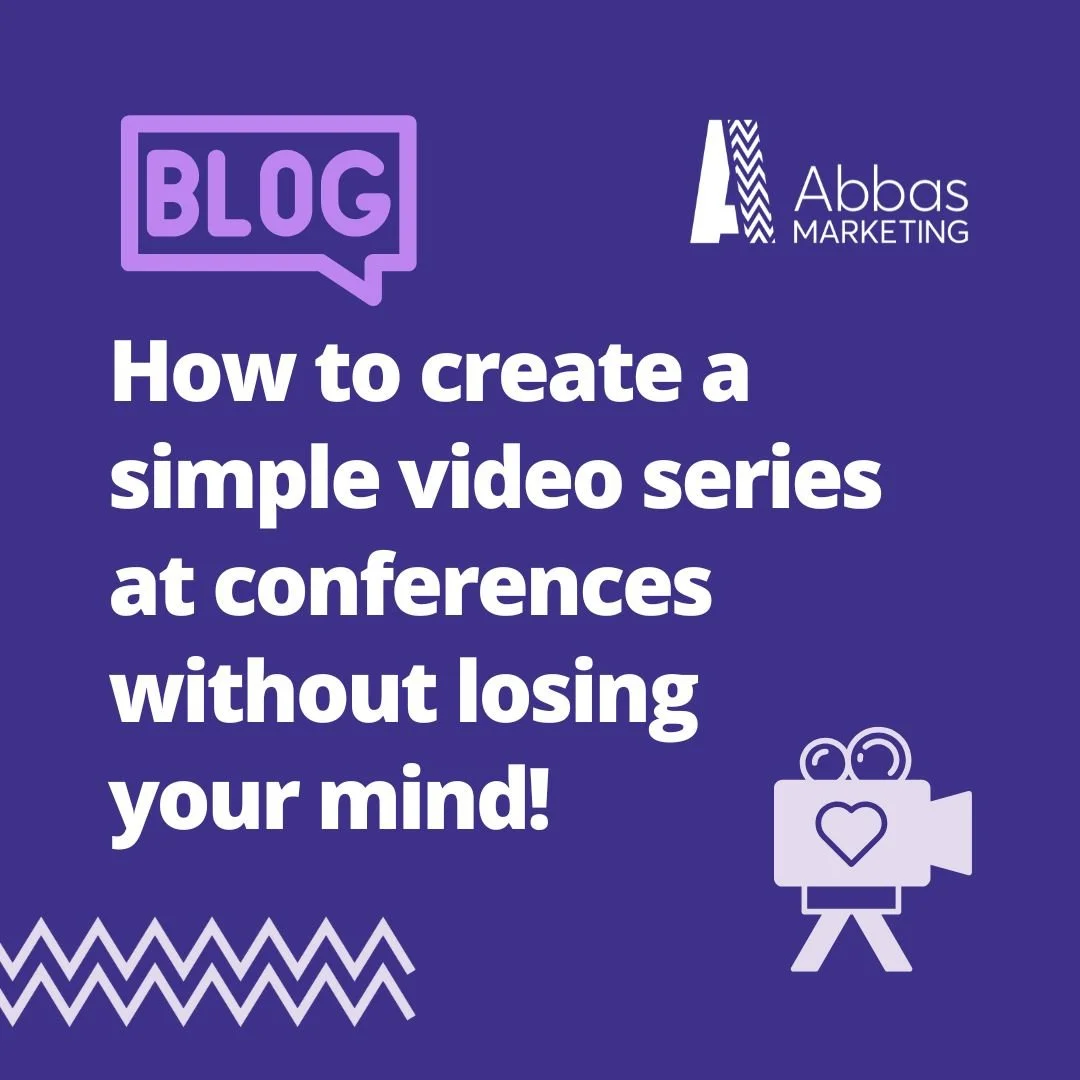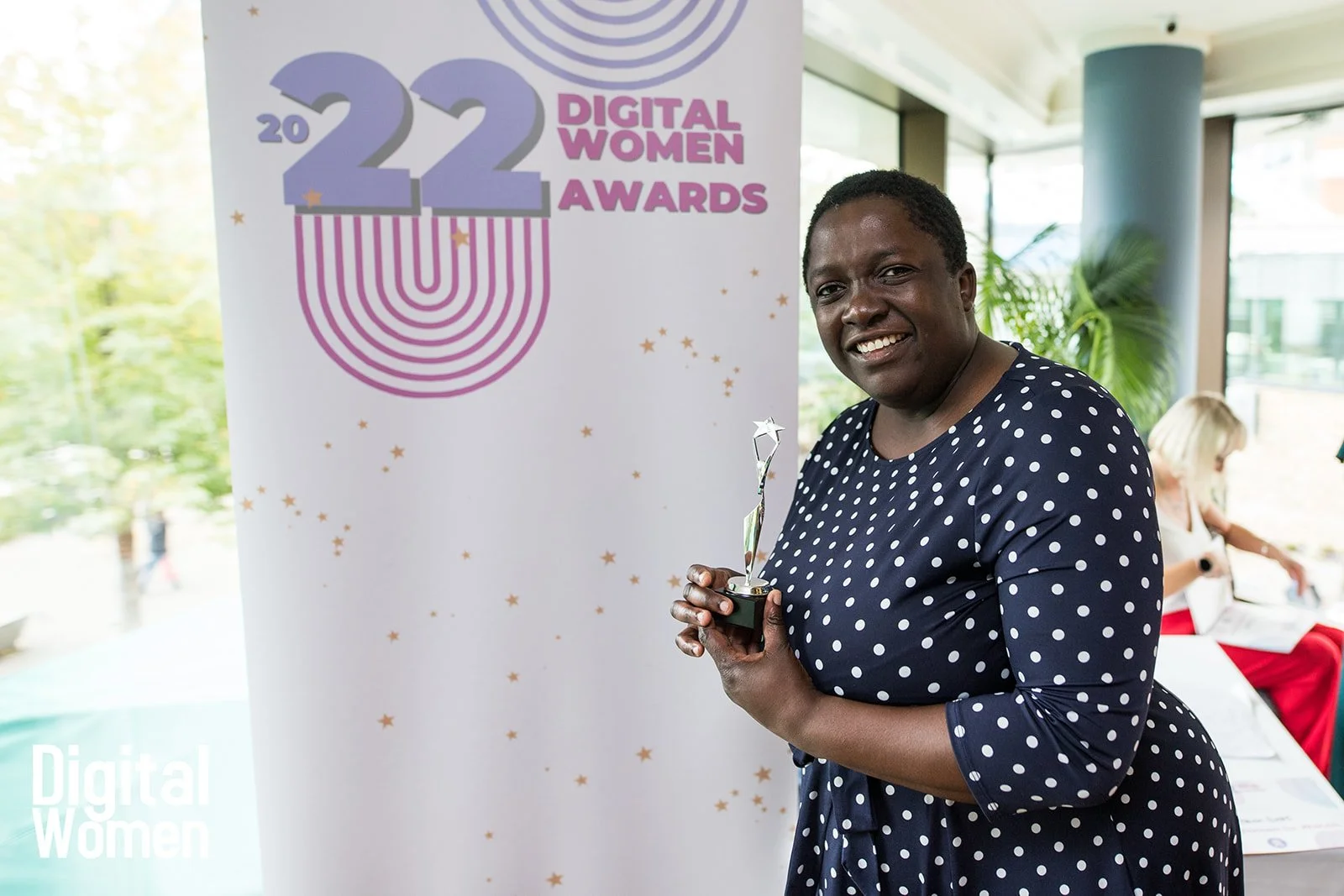How to create a simple video series at conferences without losing your mind!
I'm an ideas person. I see content opportunities everywhere, which is both brilliant and slightly overwhelming when you're trying to actually execute them.
But I’ve found most of the best content ideas are the simplest ones that anyone can pull off without breaking the bank or their sanity.
‘Love Learned Laughed’ was my mini-series from UKREiiF 2025, and, it's a perfect example of how to make conference and event content work.
The backstory (or how I learned from my mistakes)
So, here's the slightly embarrassing truth. I actually launched ‘Love Learned Laughed’ during UKREiiF 2024. I had made the intro video, created a stack of templates including graphics and video stickers in CapCut, I’d really spent a lot of time on it. My plan was to record interviews during the show and release them live during the event itself.
What actually happened? Absolutely nothing. Do you remember seeing it?
Probably not, I’m guessing. I got to the event and the process I'd set up was just a bit too much and yes it overwhelmed me. It was just too many moving parts when I should have been focusing on actually meeting people, so I just didn’t ask people and record.
So I launched the series, but never actually recorded the interviews.
Making it work in 2025 - the simpler approach
Fast-forward to this year, and a few days before UKREiiF 2025, I thought ‘Right, I'm doing this again, but I'm making it dead simple.’
The concept was beautifully simple: approach interesting people at UKREiiF and ask them three questions:
What have you loved about the event?
What have you learned?
What has made you laugh?
These micro-interviews, lasting 15-90 seconds each, captured genuine moments and insights from real estate industry professionals. The format was unscripted and conversational.
The key change? Record at the show, release after the event.
This one shift made everything manageable. I could focus on networking and having proper conversations during the day, then worry about the editing and copy later when I wasn't trying to juggle seventeen different things and be here there and everywhere.
I also decided to release them every other day - Monday, Wednesday, Friday - rather than daily. Trust me, daily content sounds great in theory but becomes proper laborious in practice. Plus, your audience doesn't want to feel like they're being bombarded in a sea of sameish content.
Forming a simple video creation set up
Here's what made it work: the technical setup was ridiculously easy.
I already had some wireless mini mics that plug straight into my phone. Total setup time? About two minutes while I explained the concept to whoever I was chatting with.
Each night, I'd charge the mics, chuck them in my bag, and that was it. Pull out the box, plug in the adapter, switch on one mic (I wasn't recording my own voice), do a quick test and off we went.
The format was simple too: three questions about what they'd loved, learned, and what made them laugh at the show. If someone stumbled, no worries - we'd just redo that bit. Keep it easy, keep it human, keep it quick. My VA would work through the editing of each film, and I reviewed them when I actually had headspace to do so.
A simple video editing workflow
I edited the first video myself in my hotel room using a simple video editing software called VEED which is a brilliant drag-and-drop tool. Here’s an affiliate link to VEED which includes a special offer if you sign up. Set up the template, created question graphics in Canva, then gave my VA step-by-step instructions to follow for the rest.
The workflow was:
Upload videos to our shared Asana folder (or sometimes just WhatsApp them over)
Use the magic audio feature on VEED to remove the background noise and clean audio
Create clips where it takes me out when I ask the questions.
Add in the question slide before each response.
Make a cover in Canva.
Add captions and leave as draft in VEED
I’ll review and add any camera movements or final tweaks
Export and they're ready to go
Multi-platform distribution made simple
For the copy, I kept it formulaic but personal. Tag the person and myself, mention their company if relevant, short blurb about who they are, standard hashtags like #UKREiiF, #property, #realestate.
Then I used Metricool scheduling software to push them across multiple platforms without having to upload to each one individually. LinkedIn (my main channel), YouTube, TikTok, Instagram Reels, Threads, Bluesky - the lot. I then added them as Stories on Instagram and TikTok for extra reach.
Video creation equipment kit list
Why this model works (and how you can adapt it)
The beauty of this approach is it's not just for conferences. You could use this format for:
Quick interviews with guests at your own events
Behind-the-scenes content at project sites
Team spotlights in the office
Client testimonials
The key principles stay the same: keep the setup simple, focus on the conversation during recording, and do the heavy lifting in post-production when you've got proper time to think.
‘Loved, Learned, Laughed’’ had some interesting metrics Reaching 12,575 people across 8 platforms with 37 posts, the campaign provided valuable data about where authentic storytelling performs best.
Here's a breakdown of what happened, the data we gathered, and the insights we uncovered about platform performance.
Multi-platform content distribution
I distributed content across 8 platforms, using both corporate channels and personal LinkedIn networks of featured contributors.
The campaign numbers:
37 total posts across 8 platforms
12,575 total impressions/views
287 total interactions
2.28% overall engagement rate
Campaign period: May 26 - June 11, 2025
LinkedIn was my primary platform and generated 9,213 impressions (73.3% of total campaign reach) from 8 posts. These were posted from contributors' personal LinkedIn profiles rather than corporate pages.
Contributors shared videos on their personal profiles, with the average LinkedIn post generating 1,152 impressions - significantly higher than other social platforms.
Top LinkedIn Performers:
Eimear Strong: 3.96% engagement rate
Ayo Abbas: 3.49% engagement rate
Stacey Meadwell: 3.24% engagement rate
Katie Rudin: 3.09% engagement rate
I've been getting around 1,500 views per video just on LinkedIn, plus decent numbers across TikTok and Instagram. Not earth-shattering, but solid engagement for something that cost under £50 to produce.
The mini mics were about £24, you can get adapters for any phone, and the editing tools I use are all affordable. There's literally nothing stopping anyone from doing this.
Your turn - what's stopping you?
Content doesn't have to be super complicated or expensive. Sometimes the best stuff comes from just being prepared with simple kit and asking good questions. The world really is your oyster with this kind of approach - it doesn't always need a professional camera crew. Your phone, steady hands, and a bit of planning can create content that actually connects with people.
What conferences or events are you heading to where you could try something like this? I'd love to know how you get on.
Want more tips on making marketing simpler? Check out my other blog posts on practical marketing approaches.
Thanks for reading
I’m Ayo and I’m a built environment marketing consultant. I’m a marketer by trade who loves to create thought provoking marketing strategies & plans and content for firms who want to make a positive impact. I also offer practical training so your teams have the skills to prosper. Do DM me if you want to talk about how I can help your firm. ayo@abbasmarketing.com





